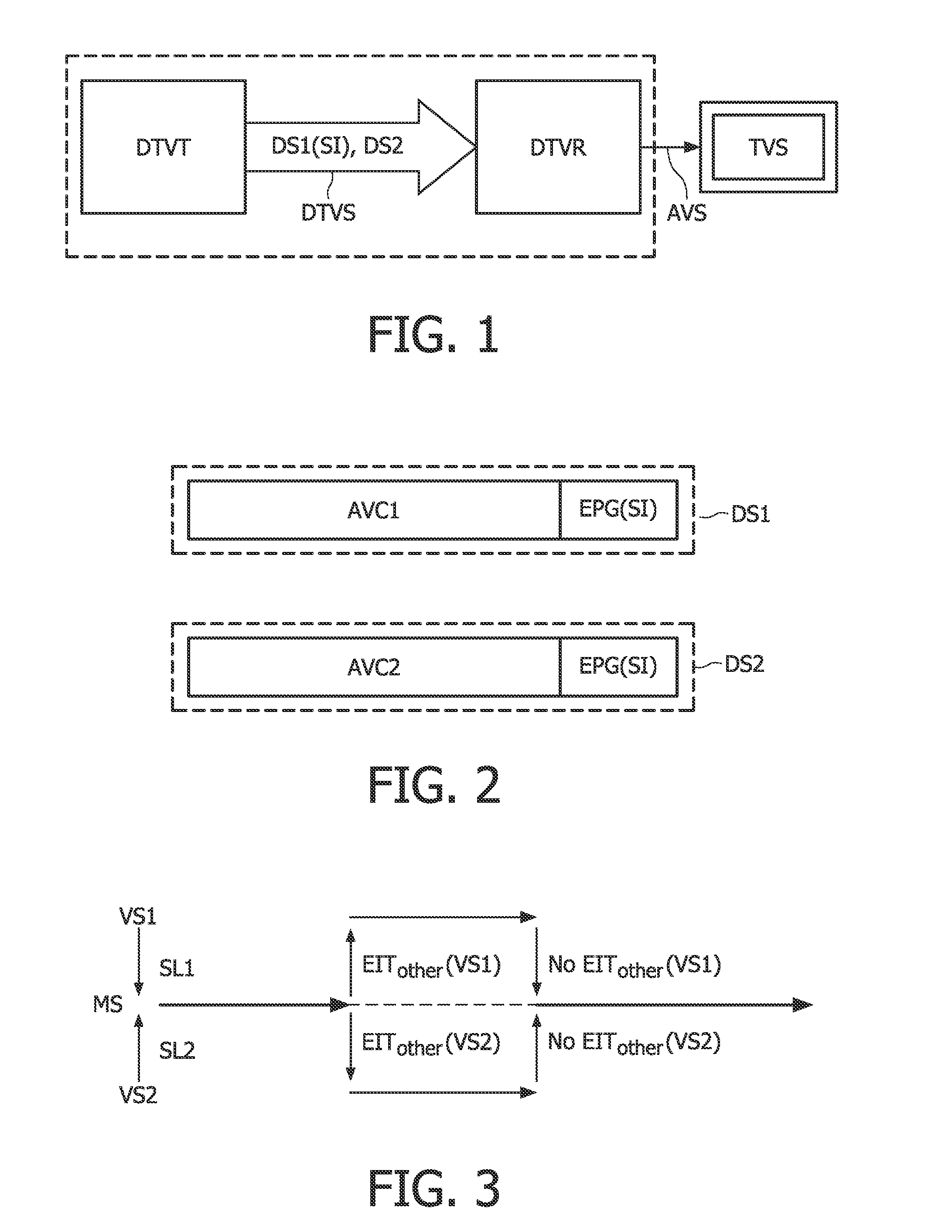Dynamic switching between digital TV services
a technology of digital tv and switching between services, applied in the field of digital tv, can solve problems such as complex and non-conformity in the implementation of receivers, and achieve the effect of improving the reception quality of hd services
- Summary
- Abstract
- Description
- Claims
- Application Information
AI Technical Summary
Benefits of technology
Problems solved by technology
Method used
Image
Examples
Embodiment Construction
[0042]FIG. 1 shows a Digital TV system embodiment according to the invention. A Digital TV transmitter DTVT transmits a Digital TV signal DTVS, and this signal DTVS is receiver by a Digital TV receiver DTVR. The receiver outputs in response to the Digital TV signal an appropriate audio-video output signal AVS. This to output signal AVS can then be applied to a TV set TVS or separate audio and video devices.
[0043]As illustrated, the Digital TV signal DTVS includes two data-streams, namely a first data-stream DS1 including a representation of a content of a mother service to which the receiver DTVR should tune to by default. A second data-stream DS2 is also included in the signal DTVS, and this second data-stream DS2 includes a representation of a content of a variant service. The brackets indicate that data representing switching information SI is included in the data-stream DS1 of the mother service. Upon reading this switching information SI, the receiver is allowed to switch to th...
PUM
 Login to View More
Login to View More Abstract
Description
Claims
Application Information
 Login to View More
Login to View More - R&D
- Intellectual Property
- Life Sciences
- Materials
- Tech Scout
- Unparalleled Data Quality
- Higher Quality Content
- 60% Fewer Hallucinations
Browse by: Latest US Patents, China's latest patents, Technical Efficacy Thesaurus, Application Domain, Technology Topic, Popular Technical Reports.
© 2025 PatSnap. All rights reserved.Legal|Privacy policy|Modern Slavery Act Transparency Statement|Sitemap|About US| Contact US: help@patsnap.com



